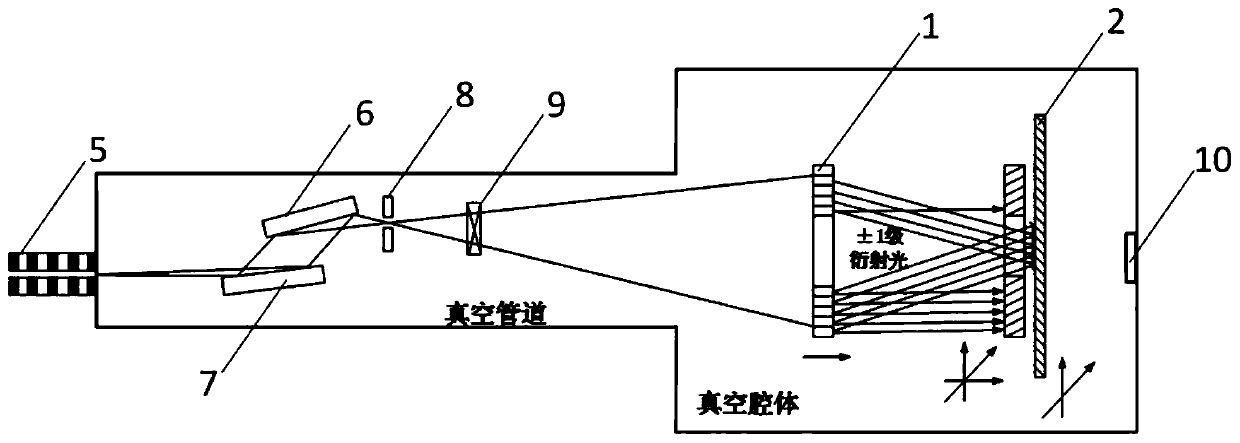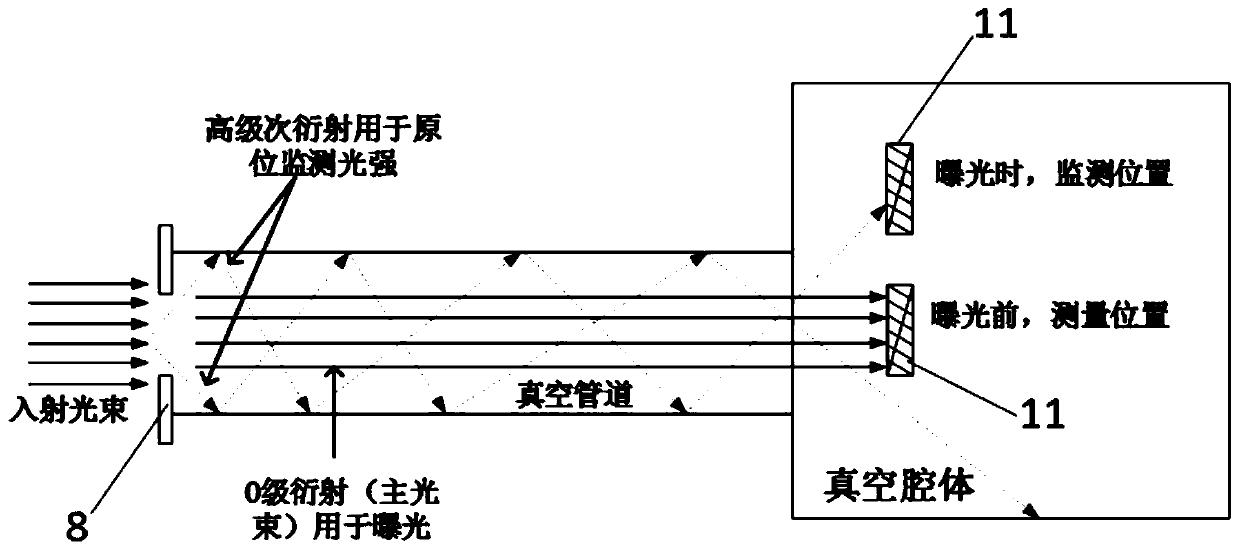A method for in-situ luminous flux monitoring and exposure dose compensation
A technology of exposure dose and compensation method, which is applied in microlithography exposure equipment, photolithography exposure device, optics, etc., can solve problems affecting luminous flux, optical element deformation, luminous flux change, etc., to improve device performance and uniform nanostructure Effect
- Summary
- Abstract
- Description
- Claims
- Application Information
AI Technical Summary
Problems solved by technology
Method used
Image
Examples
Embodiment Construction
[0024] The preferred embodiments of the present invention will be given below in conjunction with the drawings and described in detail.
[0025] The present invention, namely an in-situ luminous flux monitoring and exposure dose compensation method, includes the following steps:
[0026] Step S1, using the existing synchrotron X-ray large area interference lithography system (such as figure 1 (Shown) Before performing the X-ray interference lithography experiment, first, adjust the incident beam (ie, X-ray) to make its intensity uniformly distributed on the mask grating 1, and set a photodiode 11 upstream of the mask grating 1 in the vacuum chamber. And make it outside the main optical path generated by the incident beam (such as image 3 As shown, the photodiode 11 is in the monitoring position at this time), the first photocurrent is measured by an ammeter (not shown) connected to the photodiode 11, and then the first luminous flux Fsu is calculated (the luminous flux calculation...
PUM
 Login to View More
Login to View More Abstract
Description
Claims
Application Information
 Login to View More
Login to View More - R&D
- Intellectual Property
- Life Sciences
- Materials
- Tech Scout
- Unparalleled Data Quality
- Higher Quality Content
- 60% Fewer Hallucinations
Browse by: Latest US Patents, China's latest patents, Technical Efficacy Thesaurus, Application Domain, Technology Topic, Popular Technical Reports.
© 2025 PatSnap. All rights reserved.Legal|Privacy policy|Modern Slavery Act Transparency Statement|Sitemap|About US| Contact US: help@patsnap.com



